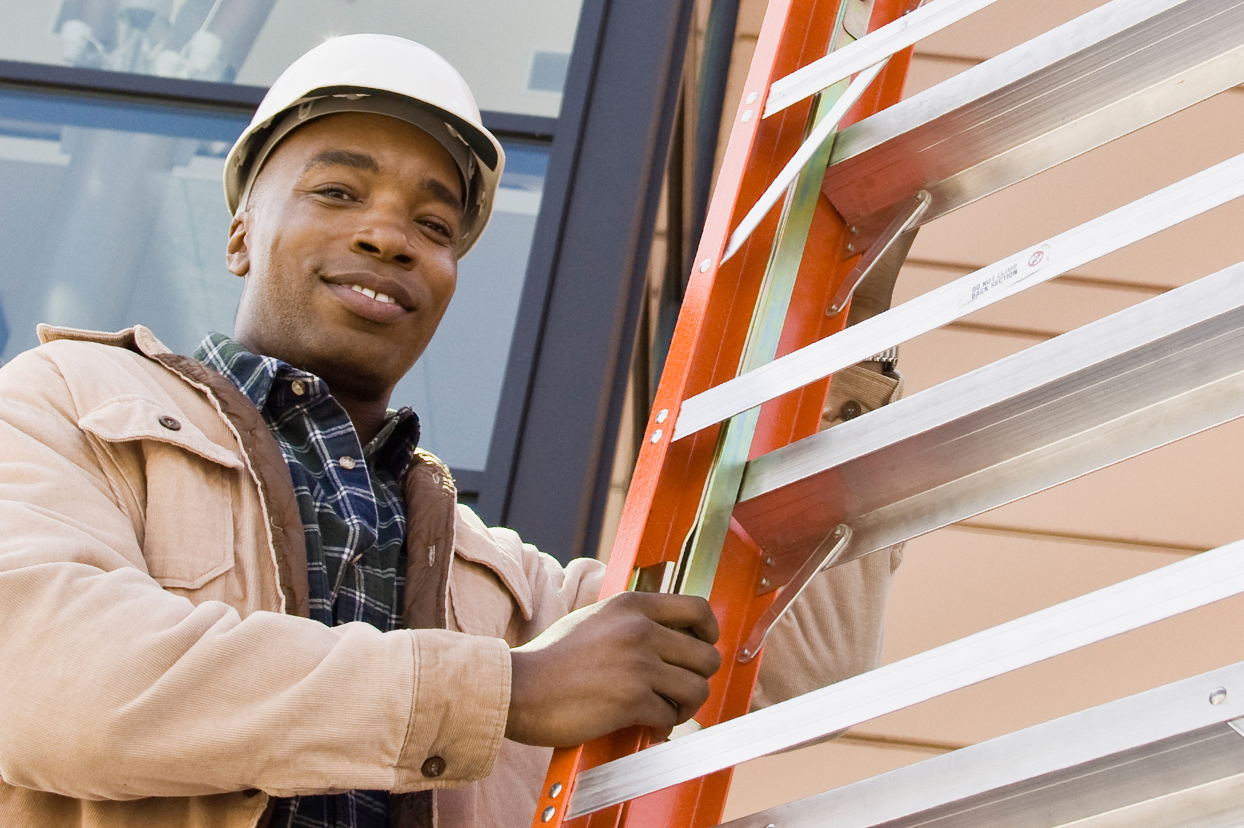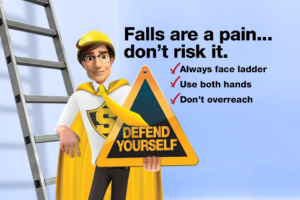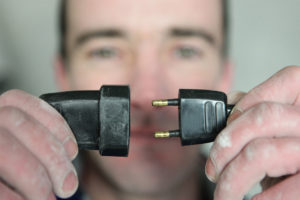April 2, 2024
Ladder inspections: What to look for
We use ladders so often, sometimes we forget the risk we’re taking each time we climb one.
There are several ways in which small mistakes in usage can add up to major injury risks. The National Institute for Occupational Safety and Health lists a few:
- Insufficient ladder inspection
Ensure your equipment is in working order before any project (see more tips below). - Incorrect extension ladder setup angle
In about 40 percent of cases, the primary cause of injuries is a ladder sliding out at the base due to an incorrect angle for setup. - Inappropriate ladder selection
Notably, selecting a ladder made of nonconductive material can avoid electrocution and related falls. - Improper ladder use
Overreaching? Carrying items while on a ladder? Applying excessive force? There are several ways a person can injure themselves while using a ladder. - Lack of access to ladder safety tools and information
Small employers account for nearly 80 percent of all construction companies, and they may not have access to ladder safety resources.
For perspective, about half a million people are treated for ladder-related injuries each year. This is why you should inspect ladders before every use.
Below, find more tips on what to look for when doing a ladder inspection.
When should you inspect ladders?
- Inspect new ladders promptly upon receipt
- Inspect ladders before each use
- Check the condition of ladders that have been dropped or have fallen before using them again
What should you look for when inspecting any ladder?
- Missing or loose steps or rungs (they are loose if you can move them by hand)
- Damaged or worn non-slip cleats
- Loose nails, screws, bolts or nuts
- Loose or faulty spreaders, locks and other metal parts in poor repair
- Rot, decay or warped rails in wooden ladders
- Cracks and exposed fiberglass in fiberglass ladders
- Cracked, split, worn or broken rails, braces, steps or rungs
- Sharp edges on rails and rungs
- Dents and dings in aluminum ladders
- Rough or splintered surfaces
- Corrosion, rust, oxidization and excessive wear, especially on treads
- Paint or other material that could obstruct your ability to see defects
- Oil, grease, mud or other debris on rungs or other parts of the ladder
- Twisted or distorted rails — check ladders for distortion by sighting along the rails
- Missing identification labels
Real-world example
A near-tragedy at a roofing company a few years ago underscores the importance of ladder inspections.
According to an account provided by the Wisconsin Occupational Safety & Health Administration:
Two roofing technicians were using ladders to get to a roof for inspection and repair.
The first technician set up a 30-foot extension ladder rated for a 300-pound load capacity. (The technician weighed 160 pounds.)
The ladder was less than 2 months old and had recently been inspected. But as the technician climbed the ladder, he felt it begin to give way.
Fortunately, he was able to hold onto the edge of the roof as the ladder collapsed under him. He stayed there until the second technician set up another ladder for him to climb down to safety.
The company immediately inspected all of its fiberglass extension ladders and found that about 20 percent of them had small cracks in the fiberglass on the side rails — some right next to the rungs.
What other things should you look for when inspecting stepladders?
- Wobble
- Loose or bent hinges and hinge spreaders
- Broken stop on a hinge spreader
What should you look for when inspecting extension ladders?
- Loose, broken or missing extension locks
- Defective locks that do not seat properly when ladder is extended
- Sufficient lubrication of working parts
- Defective cords, ropes or chains
- Missing or defective foot pads or sleeves
What should you do after inspecting any ladder?
- Clean the ladder if needed and again thereafter as needed
- Replace worn or frayed ropes on extension ladders
- Lubricate pulleys on extension ladders regularly
- Tag any defective ladders and take them out of service
What are some things you should not do after inspecting ladders?
- Do not make temporary or makeshift repairs
- Do not try to straighten or use bent or bowed ladders
A fall from a ladder can be devastating, so please take the extra time to make sure your ladder is in good shape before you use it.
Lastly, check out our additional resources on ladder safety.
Originally posted May 2017; updated April 2024.
Want more content like this?
Get the latest Simply Work Comp blog posts in your inbox.





